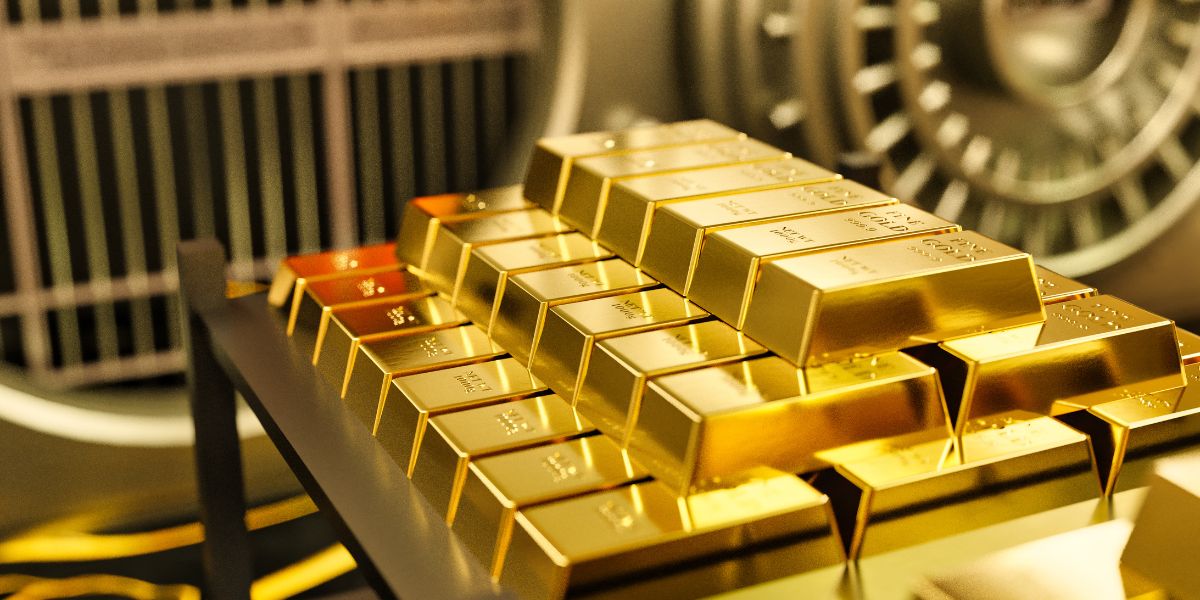Bullion refers to the bulk form of precious metals, typically gold or silver. These metals can be cast into ingots or minted into coins, with the latter often done by governments. Beyond being a financial investment, bullion represents a tangible link to history, showcasing craftsmanship and offering a unique means of preserving wealth. Its value constantly changes, based on macroeconomic conditions and investor sentiment.
In this article, we will dive deeper into the aspects and appeal of bullion that continue to fascinate collectors and investors.
Understanding Bullion
As we mentioned, bullion is primarily the bulk form of precious metals, valued by weight rather than face value. While governments can mint coins, assigning them a numerical face value, any company can produce bullion ingots or medallions. The face value of coins, such as Canada’s $50 coin—worth approximately $1,950 by weight—is often symbolic and used for marketing. This distinction between face value and actual weight value has made gold coins and other precious metal coins sought after by collectors, as their worth fluctuates with the market price of the underlying metal.
RELATED: Investing in Gold Bullion vs. Paper Gold
Types of Bullion
Bullion is not limited to just gold. Other precious metals like silver, platinum, and palladium are also cast into bullion forms. These metals have distinct properties, making them valuable for various industrial applications, as well as investment.
Silver bullion, for instance, is popular for its affordability and potential for growth, while platinum and palladium are prized for their rarity.
Different forms of bullion, such as bars, rounds, and coins, cater to diverse preferences and investment strategies. While bars might be preferred by large-scale investors for their efficiency in storage, coins offer aesthetic appeal and historical significance. Understanding the various types of bullion helps investors and collectors make informed choices to suit their unique needs and interests.
Investing in Bullion
Investing in bullion can be a sound financial strategy, offering a hedge against inflation and economic uncertainty. Unlike stocks or bonds, bullion provides a tangible asset that has intrinsic value. Its price is driven by supply and demand fundamentals, often moving inversely to traditional financial markets.
Bullion investments can be made through physical ownership or financial products like exchange-traded funds (ETFs) backed by precious metals. Physical bullion offers the satisfaction of holding a tangible asset, while financial products provide liquidity and ease of trading.
Both approaches have their merits and risks, and prospective investors should consult with financial professionals to align their investment in bullion with their overall financial goals.
RELATED: Read Our Beginner’s Guide to Precious Metals Investing
Collecting Bullion Coins
Collecting bullion coins goes beyond investment; it’s a passion and art form for many. These coins often feature intricate designs, historical motifs, and cultural significance. Collecting bullion coins can be an enjoyable hobby and a way to preserve history.
Some collectors focus on historical coins, while others seek limited edition releases from renowned mints. The thrill of discovery, the joy of ownership, and the potential for appreciation make collecting bullion coins a multifaceted and rewarding pursuit. Collaborating with reputable dealers, joining collector communities, and staying informed about market trends can enhance an aspiring collector’s experience.
Sell Your Bullion to Manhattan Gold & Silver
Have bullion you’d be interested in selling? Visit us in person, ship your lot, or get in contact with us for more information.












